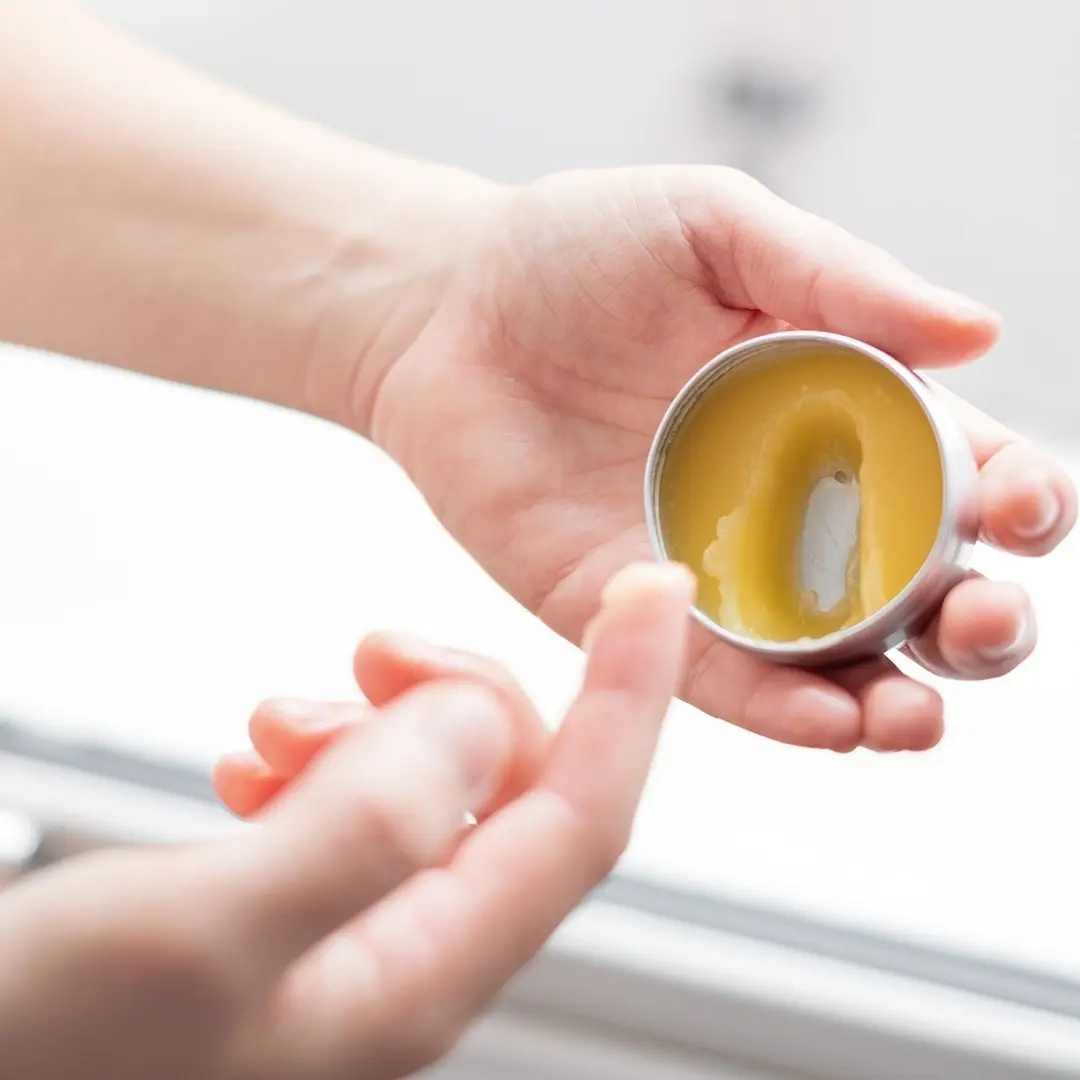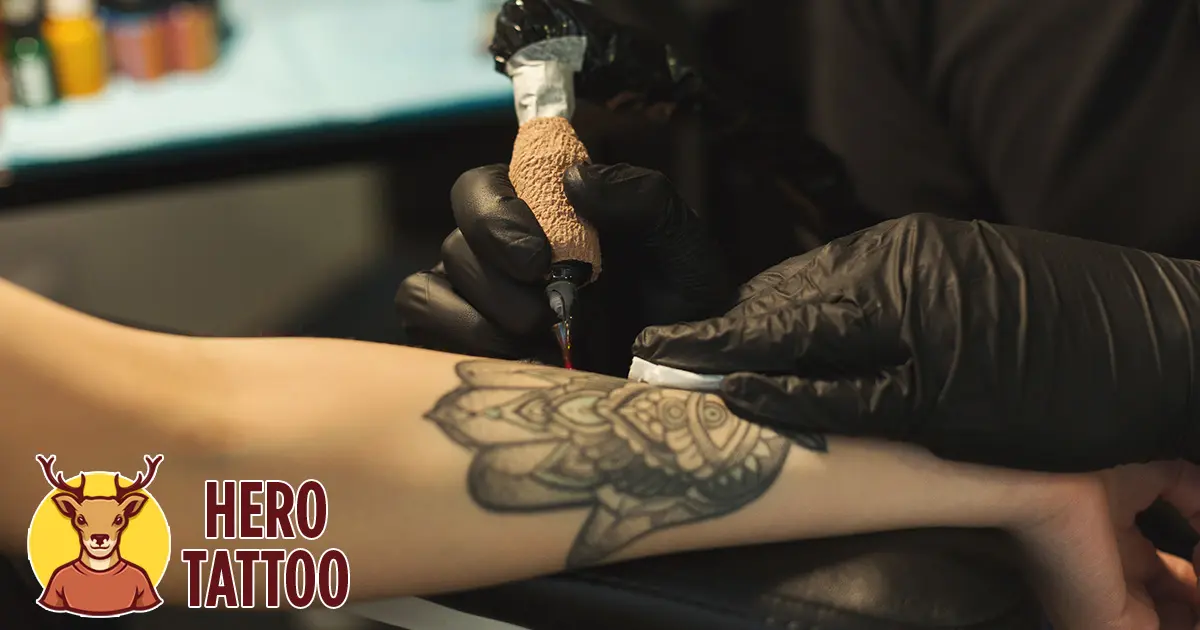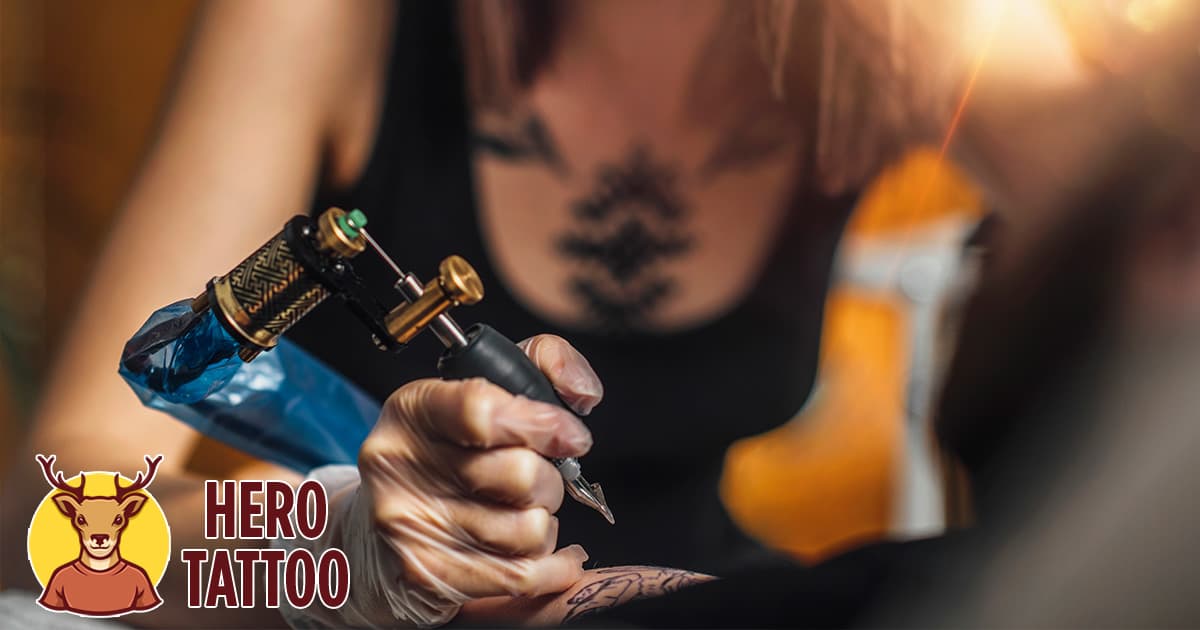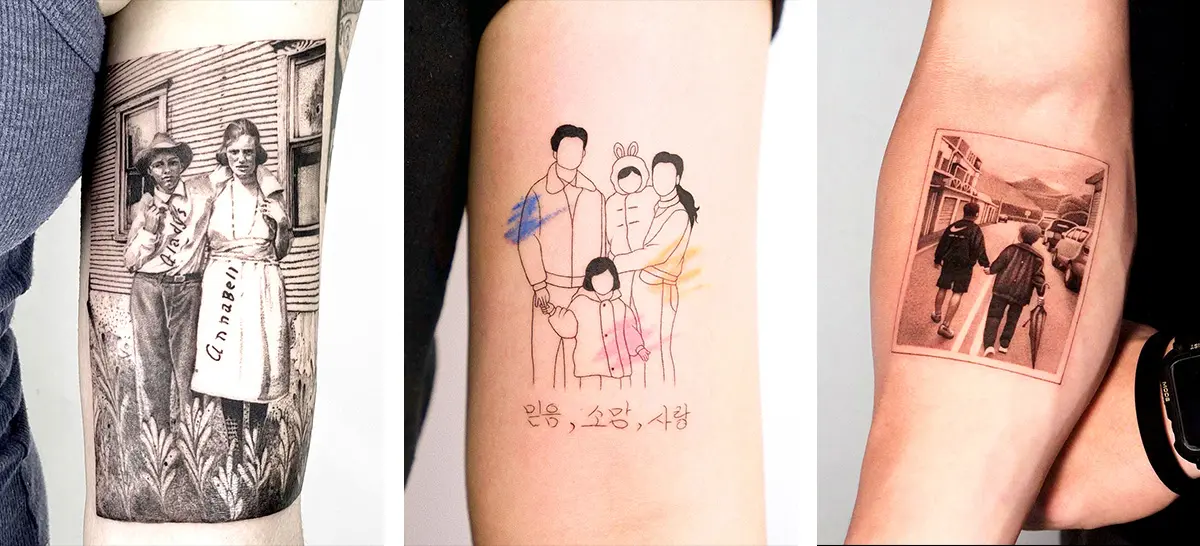So you’ve just gotten a new tattoo, and you can’t wait to show it off to everyone. It may take some time for you to do this because you must now take adequate care of your tattoo and allow it to heal properly before you can proceed. If you’ve never dealt with this type of situation before, the aftercare regimen might be a bit tricky.
Your tattooist, on the other hand, should offer you all of the required information and guidance, as well as recommendations on which items to use during the healing process.
But what if you’re told to put Vaseline on a new tattoo because it’s recommended? Is it possible for you to accomplish that?
Next, we’ll take a closer look at Vaseline as a product and its impact on tattooed skin in the following sections. So, without further ado, let’s get this show on the road.
Vaseline: A Quick Overview

What exactly is vaseline?
Vaseline is a petroleum jelly-based product that is 100 percent natural. When applied to dry, sensitive, or injured skin, the substance has traditionally been described as a moisturizer. Because of its widespread usage since 1872 for irritated skin, petroleum jelly has been hailed as a groundbreaking product, which was marketed under the brand name Vaseline for decades afterward.
Vaseline, often known as petroleum jelly, is a semi-solid combination of waxes and mineral oil that may be melted when heated. Robert Chesebrough is credited with discovering petroleum jelly after seeing oil workers using petroleum jelly on their work-related wounds and burns and recording their findings. Chesebrough discovered that this jelly is efficient for skin protection and the construction of a water-resistant barrier for the skin, and he named it after his grandfather.
Because of its characteristics, many people refer to Vaseline as “wonder jelly,” and many people even prescribe it for tattoo aftercare and tattoo healing because of its effectiveness. Because vaseline is relatively inexpensive and widely available, many people use it for these reasons and keep it on hand as a basic home essential.
What is the purpose of using vaseline?
Vaseline or petroleum jelly products containing 100% petroleum jelly are widely used because:
- In addition to being thought to treat skin irritations, wounds, and burns, studies have indicated that Vaseline and petroleum-based products can be effective for post-surgical skin healing, prevention of infections, and maintenance therapy for those who suffer from atopic dermatitis. However, such applications are restricted to superficial skin injuries and a controlled setting in which the treatment is carried out by a medical specialist only.
- They are considered to hydrate the skin and remove makeup; petroleum jelly has been demonstrated to be useful in both makeup removal and hydrating the skin of the face. Oil is typically considered an efficient makeup remover, and Vaseline is safe for use on the eyes while removing eye makeup. Vaseline is also suggested for application to the skin during the winter months to keep it moisturized and prevent it from becoming dehydrated.
- Vaseline is thought to help provide lubrication for a stuck object because it is regarded as an effective lubricant.For example, many people use petroleum jelly to remove a ring that has been stuck on their finger. It may also be used throughout the house to fix squeaky hinges and doors, among other things.
It is important to note that none of these Vaseline applications have been clinically validated or evaluated other than for post-surgical skin restoration. The effects are largely anecdotal, and they can be detrimental in some instances. To avoid using Vaseline on your face or skin, especially if your skin is irritated or injured, consult with a medical practitioner before you make the decision.
Is Vaseline a safe product?
Vaseline is typically regarded as safe for external use. Internal use of this substance may have negative effects on the body.Some of the negative consequences of Vaseline usage are as follows:
- Allergies, severe eye irritation, and skin reactions have been reported.
- Acne and breakout development are caused by pore blockage.
- In the case of an infection vaseline is used for lubrication during sexual encounters, particularly vaginally.
In the following paragraphs, we’ll go over the hazards of using vaseline as a tattoo aftercare product, as well as how to avoid them.
So, is it okay to put Vaseline on a fresh tattoo?

As we’ve seen, petroleum jelly (also known as Vaseline) appears to be quite effective in treating skin wounds, treating dry skin, and preventing skin damage. Does it, however, pose a risk when applied to freshly tattooed skin?
Despite its “healing” effects, you should avoid putting Vaseline on a fresh tattoo for the following reasons:
Vaseline obstructs the ability of the skin to breathe
Because of the occlusive ingredients in petroleum jelly, studies have demonstrated that 100 percent petroleum jelly can fully plug skin pores. A thin coating of Vaseline can restrict the skin from breathing, resulting in acne outbreaks and a delayed healing time after a cut or abrasion.
The use of Vaseline on tattooed skin is not suggested as a result of this occurrence. Such skin is an open wound that needs the passage of air to dry up and regenerate new skin layers. In addition to preventing the tattoo from healing, Vaseline deprives it of oxygen, resulting in a longer healing time and a more difficult aftercare process to complete.
Vaseline Can Mess Up The Ink
What exactly does getting a fresh tattoo imply? It just indicates that your skin has been injured or inflamed, and that the tattoo has not yet become fully embedded in your skin. In addition, this shows that the ink is also susceptible to injury because the skin hasn’t fully healed at this point.
When you get a tattoo, your skin will be delicate and act like a fresh wound for the first few days afterward. For example, consider applying Vaseline to a new wound and inking it with ink that hasn’t yet dried completely. Of course, the Vaseline will interact with the ink and pull it out of the dermis if applied topically.
This is something that no one wants to happen.
To prevent this from happening, we suggest that you keep your hands away from your tattoo for the first 24 to 48 hours. You should expect your tattoo to exude plasma, blood, and extra ink throughout this period. Once you have removed the plastic covering from the tattoo, it will begin to dry out and, in time, will begin to cure itself. You’ll also notice that you don’t even need Vaseline.
Vaseline Can Prolong Healing and Cause Infections
According to our previous discussion, Vaseline over a fresh tattoo might block the pores and prevent the skin from splitting. This may be a risky game to engage in for various reasons.
- Vaseline prevents oxygen from entering the inked skin and causes the tattoo to fade.
- When there is a lack of oxygen, the skin does not mend correctly.
- A longer healing process might draw bacteria and germs to the skin, making it more susceptible to infection.
- A dangerous infection can develop if germs and bacteria become trapped in the skin.
- The infection can severely ruin the tattoo and needs quick medical intervention.
As we can see, the procedure of applying Vaseline to a tattoo to infect it is quite quick and straightforward. If you have a fresh tattoo, you should avoid putting vaseline on it if at all possible. This is true for other petroleum-based products, even if they are designed for use as tattoo aftercare items. When purchasing lotions and creams for your tattoo, carefully read the chemical list and check to see whether they include petroleum jelly before purchasing.
When Is It Okay to Put Vaseline on a Tattoo?
There are several circumstances in which it is permissible to tattoo Vasile’s name. Here are some examples of situations in which vaseline can be used without risk:
While taking a shower
Water cannot be used on a freshly applied tattoo because the ink will bleed and become discolored. Moisture can help keep skin from drying out and help speed up the healing process. As a result, we should avoid it. But how are you going to shower while your tattoo is healing?
The answer is; you will use Vaseline to protect the tattoo.
You may prevent having your tattoo completely ruined by doing the following things:
- Before you get into the shower, spread the tiniest coating of Vaseline over the tattooed region to protect it.
- It is best not to immediately shower the tattooed person.
- As soon as you are through with the shower, carefully remove the Vaseline from the tattooed area with a damp wipe or by washing the area with tepid water and anti-bacterial soap.
- Make sure to tap dry the tattooed area with a paper towel once it has been tattooed.
- Allow everything to dry on its own for as long as possible.
- If re-wrapping the tattoo is necessary, do so.
During the healing process (if the skin gets too dry)
The skin might become very dry, scaly, and itchy during the healing period, which is common. We propose putting a thin coating of vaseline around the tattooed region to alleviate discomfort and prevent the desire to scratch the tattoo. Never apply vaseline straight to the tattooed area!
Once The Tattoo Is Completely Healed
It is OK to use Vaseline and petroleum-based treatments on a completely healed tattoo once it has healed completely. Because the tattoo is no longer an “open wound,” the Vaseline will not cause any problems with the ink or skin problems. Your tattoo should be completely healed in a month or two, depending on the size, location, and quality of the tattooing job done on it. The aftercare regimen is another essential component in determining the length of time it takes for the healing process to be completed. In other words, the better you look after your tattoo, the faster it will heal.
We recommend that you only apply small layers of Vaseline to the tattoed skin or other areas where acne is a concern to avoid outbreaks.
So, what kind of products should you use?
First and foremost, we must address the following points:
You should avoid applying anything to it for the first 24 to 48 hours after getting a fresh tattoo. Wait for your tattoo to begin healing on its own before applying moisturizers and other similar items to the area!
Now, suppose you’re seeking products that are effective and high-quality alternatives to Vaseline. In that case, we have a few suggestions for you:
Even though it is meant for infant healthcare, this ointment is one of the best options available for tattoo aftercare on the market. Tattoo experts even advise this topical ointment for body modification. Because of its delicate composition, it supports the skin’s natural healing abilities. Make sure to use this ointment twice a day, after washing the tattoo, to help restore hydration and moisture to the tattooed surface.
- Bepanthen Diaper Care Ointment – This is a calming, multi-purpose balm that may relieve dry skin irritations and irritations caused by other factors.
- LaRoche-Posay Cicaplast Baume B5 – The balm has a tremendously relaxing effect, which helps to reduce the irritating feeling while also promoting natural skin healing and regeneration. After a healed tattoo has been cleansed and dried well, the balm should be used twice daily to keep it moisturized. In addition, the balm is appropriate for skin that is sensitive, dry, irritated, and itchy.
- Sebamed Extreme Dry Skin Repair Lotion: Sebamed Extreme Dry Skin Repair Lotion is a lotion that repairs very dry skin. This lotion has a high concentration of urea, which means it restores skin very rapidly. It also provides total relief from itching, scaling, and skin tightness. In addition to its moisture-retaining properties, the lotion has a pleasant scent that helps keep the skin feeling fresh and smelling good. Having such a lotion on hand will be quite beneficial throughout the healing period of your tattoo. It will almost immediately reduce the appearance of dryness, peeling, and irritation.
Final Thoughts
According to the examples above, putting Vaseline on a fresh tattoo might cause more damage than benefit. Even if your tattoo artist recommends that you use vaseline to moisturize your tattoo, do not follow their advice. Vaseline will clog your pores, delay tattoo healing, and may even cause the ink to become unusable altogether. That would be horrible, especially considering the amount of suffering you had to go through to obtain the tattoo. Not to mention the amount of money you’ve spent on this endeavor.
Just because something is popular does not necessarily imply that it is excellent. This is especially true in the case of vaseline. As a result, steer away from it and concentrate on utilizing lighter, less-greasy, and petroleum-free product options instead.






